Smithsonian's National Zoological Park
Introduction
Text-to-speech Audio
Images
Entrance to the National Zoo
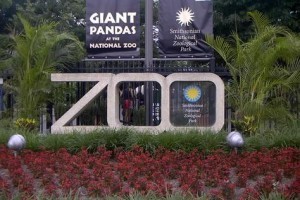
The Cheetah Conservation Station provides natural habitats to a vulnerable big cat species.
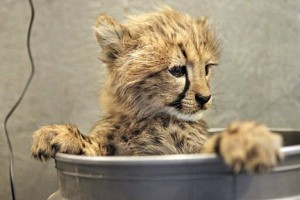
The Giant Panda is one endangered species the National Zoo is striving to protect. Its successful breeding programs have benefited the species as well as the zoo, drawing millions of visitors from around the world.
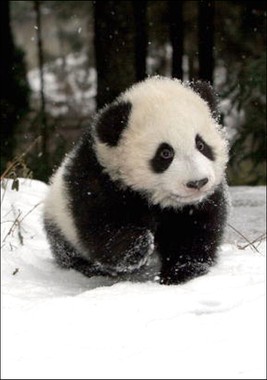
The first Smithsonian "exhibits" of living animals were located in the Castle's backyard. Photo circa 1880s, courtesy of the Smithsonian Institution Archives.
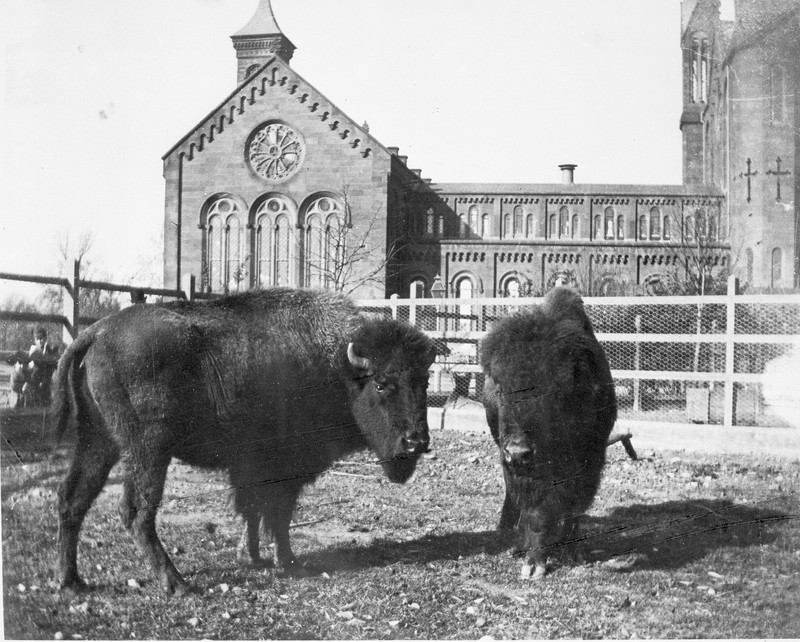
William T. Hornaday was inspired to found the National Zoo when he realized that western settlers were driving the American bison to extinction. Photo circa 1880s, courtesy of the Smithsonian Institution Archives.
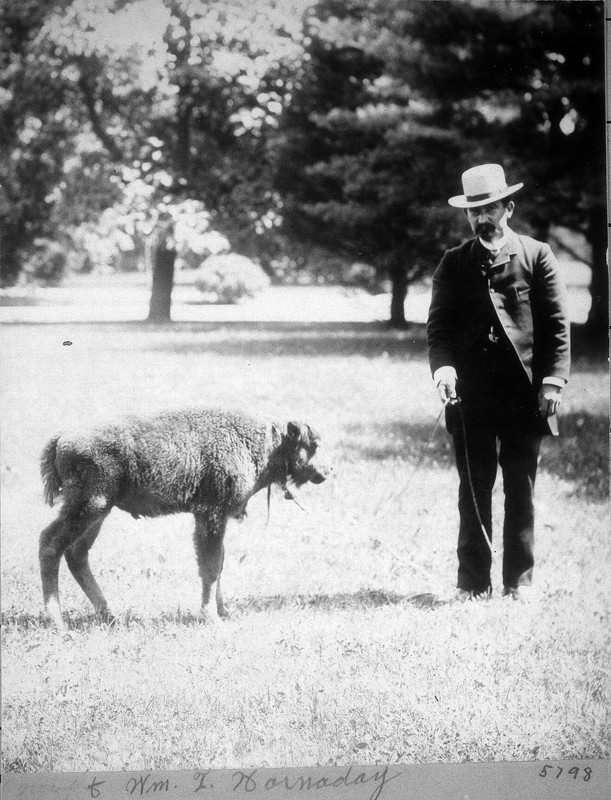
Guests walk along the main path at the National Zoo. Photo circa 1910s, courtesy of the Library of Congress.
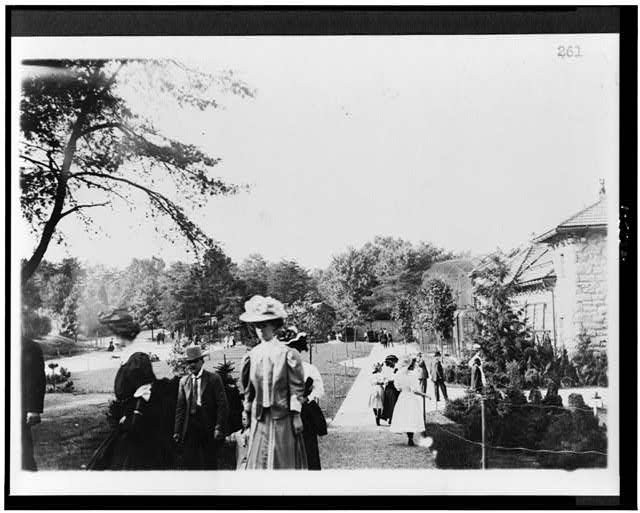
Zookeepers gather in front of a horse-drawn wagon carrying a bison inside a crate. Behind them is the animal hospital. Photo circa 1910s, courtesy of the Smithsonian Institution Archives.
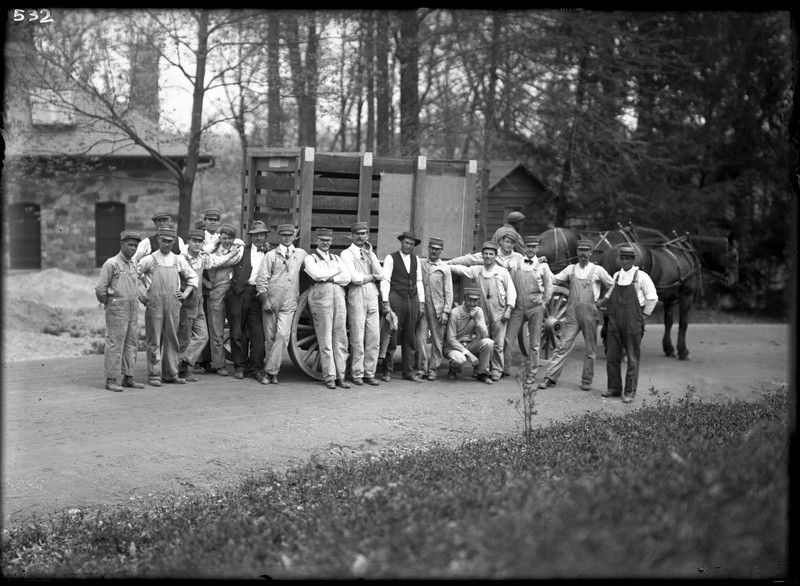
Artist Edwin Springweiler, Dr. Alexander Wetmore of the Smithsonian Institution, Head Keeper William Blackburn, and Dr. William M. Mann, Director of the National Zoological Park, unveil the anteater statue in 1938. Library of Congress.
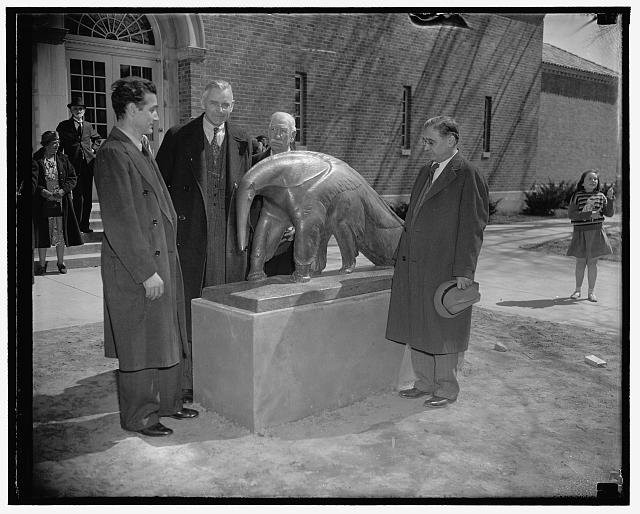
Visitors get quite an up-close look at the zoo's tortoises. Photo courtesy of the Smithsonian Institution Archives.
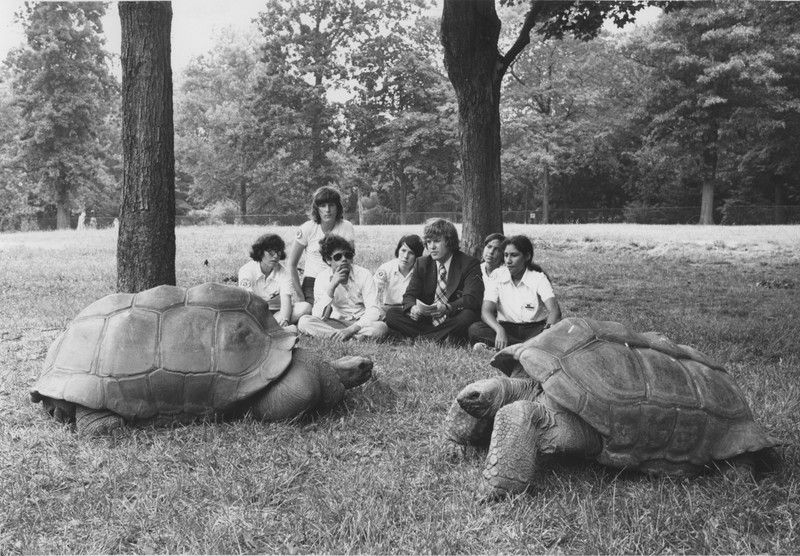
Giant pandas at the zoo have delighted visitors and contributed to conservation efforts since 1972. Here, the first pandas, Ling-Ling and Hsing-Hsing, play together. Photo circa 1985 courtesy of the Smithsonian Institution Archives.
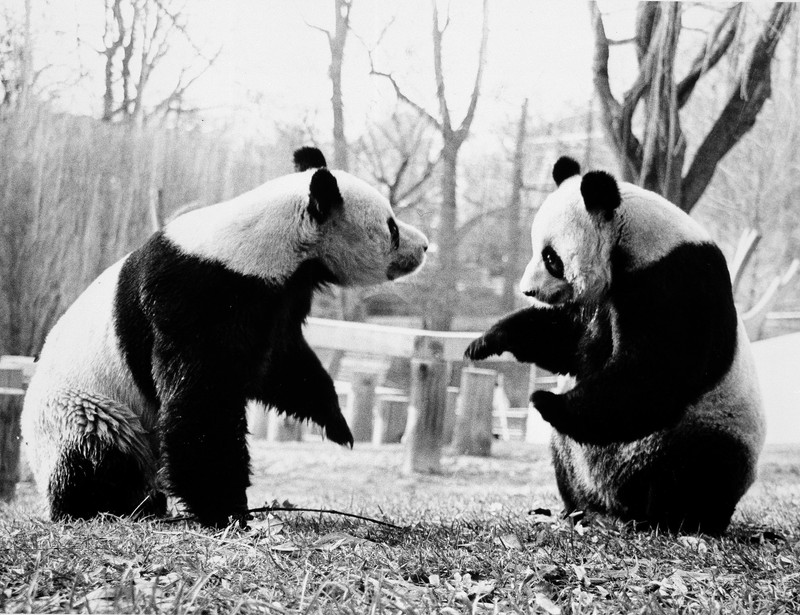
President Ronald Reagan welcomes young elephant Jayathu to the National Zoo from Sri Lanka. Photo circa 1984, courtesy of the Smithsonian Institution Archives
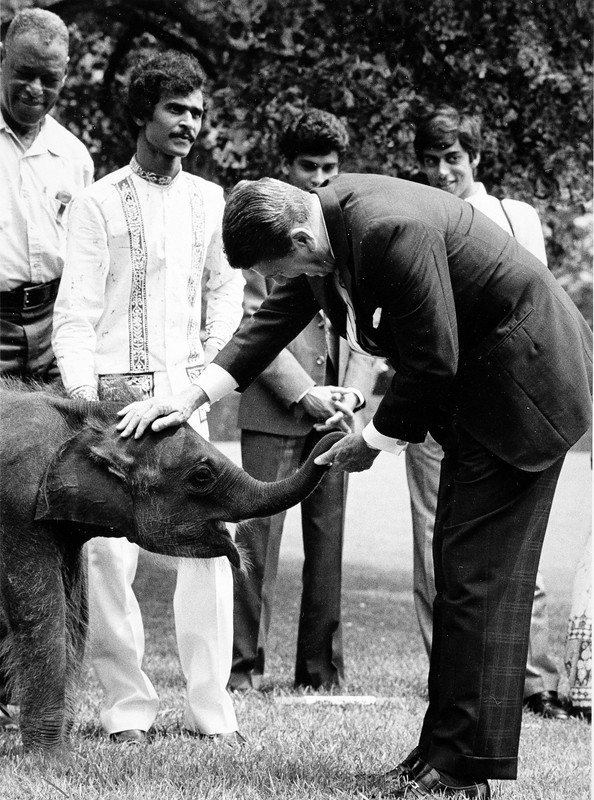
African American children during segregation, not able to attend the Easter Egg Roll, celebrate Easter Monday at the National Zoo. Photo, undated, courtesy of the Smithsonian Institution Archives and NMAAHC blog.
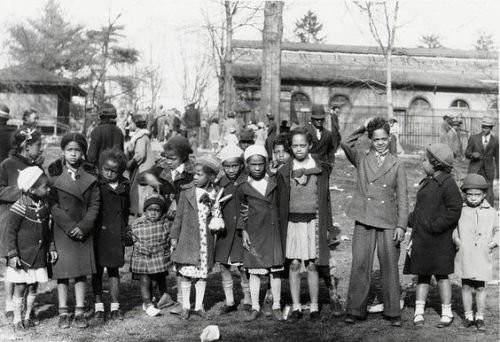
The Reptile House is one of many structures and works of art at the National Zoo created during the New Deal. Photo by Sarah Stierch, Wikimedia.

Map of the modern-day National Zoo. Courtesy of the National Zoo.
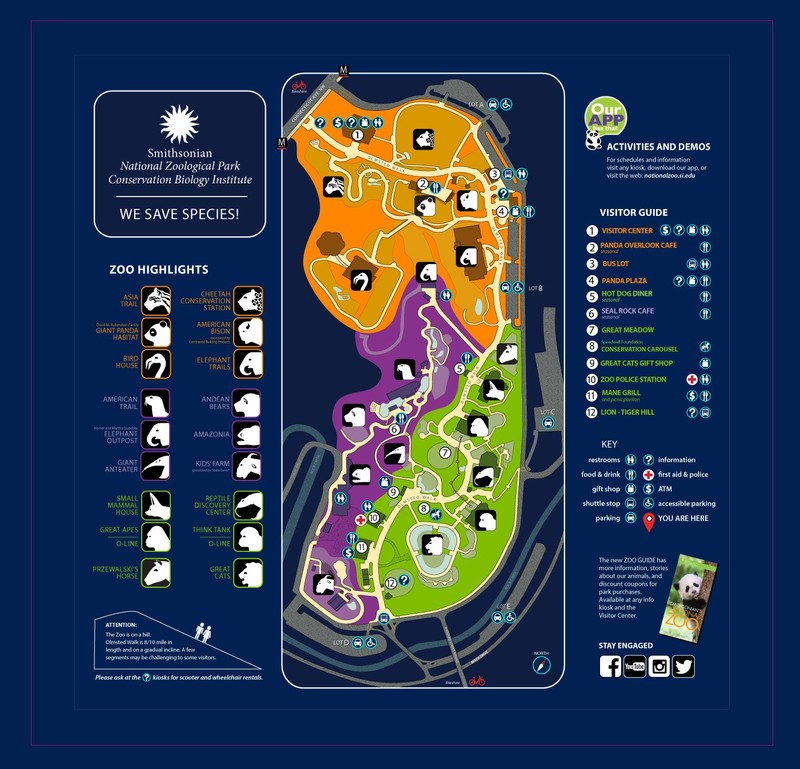
Backstory and Context
Text-to-speech Audio
The National Zoo developed out of the Smithsonian’s interest in educating the public, researching wildlife, and protecting endangered species. It was founded at a time when the Smithsonian Institution consisted of one administrative building, the Castle, and one museum, the United States National Museum, which exposed public audiences to natural history specimens and artifacts. The National Zoo’s roots can be traced back to the work of Smithsonian taxidermist William T. Hornaday, renowned for his ability to present animals in natural settings. In 1886, Hornaday traveled to the Rocky Mountains for a collecting expedition and realized that the American bison, an ecologically important creature and symbol of the national landscape, was facing extinction. When he returned, he established the Department of Living Animals on the Smithsonian Castle grounds, publicly exhibiting the animals he used as live models for taxidermy studies. In the nineteenth century, zoos began appearing in Europe and in American cities such as New York, Cincinnati, and Philadelphia. Prior to these zoos, the public could only get close to wild animals through hunting, circuses, or at fanciful menageries. Hornaday began advocating for a zoo focused on conservation, research, and education.1
The National Zoological Park was established in 1889 for “the advancement of science and the instruction and recreation of the people.”2 The Smithsonian chose 166 acres of hilly, forested land in Rock Creek. Renowned landscape architect, Frederick Law Olmsted, designed the park, while the third Smithsonian Secretery, Samuel P. Langley, expanded its mission to include more species. The National Zoo opened in 1891 with Hornaday as its first director. The early years focused on addressing challenges such as construction, animal acquisition, and working within a tight budget. The zoo was designed to offer not only public entertainment, but to provide refuge for endangered species, such as the bison and the beaver. The zoo’s original collection included 185 animals; a modest number compared the now 1,800 animals that call the zoo home today.3
Over the years, the National Zoo and its exhibits have physically transformed to accommodate visitors and changing understandings of animal wellbeing in manmade environments. New Deal relief programs, including the Public Works Administration and Federal Arts Program, developed beautiful animal houses, murals, mosaics, and statues that creatively depict the natural world. The 1960s and 1970s saw another round of construction that created the Big Cat exhibits and Beaver Valley. The National Zoo’s most recent renovations began in the early 2000s, with the new Asia Trail and overhauls of the American Trail, Elephant Trails, and Elephant House. These renovations not only provided the public with higher quality exhibits but also the animals.Limited funds, however, have constrained which exhibits can and cannot be renovated. For example, the Kids’ Farm nearly closed in 2011 and the Invertebrate Exhibit, often overlooked by visitors, shut down in 2014. Future development at the National Zoo includes the renovated Bird House, which will reopen in 2021 with a focus on migration. The National Zoo organizes its exhibits by natural habitats, rather than separating species by broader families.4
The National Zoo is a preeminent institution for conservation research and a top destination for visitors. In the 1960s, National Zoo began breeding and studying endangered species. The zoological research division was created in 1965 for the purpose of studying reproduction, behavior, and ecology of the species in the zoo and to generally understand how to best meet the needs of the animals. At the time, not much was known about the animals’ breeding behavior. Research conducted by the zoological research division helped scientists understand why some species could raise young successfully in the zoo and others could not. The Zoo’s Conservation and Research Center (CRC) was founded in 1975. In 2010, it was renamed the Smithsonian Conservation Biology Institute (SCBI) and its large facility is located in Front Royal, Virginia. The National Zoo's Migratory Bird Center was founded in 1991 to understand one of the planet’s most mysterious phenomena and address bird conservation issues. The zoo’s ethos of conservation has matured throughout its history and into the present day.5
Visitors to the National Zoo take part in the tradition of enjoying wildlife in the nation’s capital. A number of visitors, both distant and local, support educational and fundraising initiatives through the Friends of the National Zoo (FONZ), founded in 1958. Furthermore, visitors have also created their own traditions on the National Zoo grounds. In 1891, African Americans in the D.C. area began celebrating Easter Monday at the National Zoo. Banned from attending the Easter Egg Roll on the White House lawn, thousands of African American families held their own Easter Egg Roll on the National Zoo’s Lion-Tiger Hill. Easter Monday is now an official event within the National Zoo for all visitors to play games, hunt for eggs, and meet the “Easter Panda.” The National Zoo is also known for its Halloween celebration, Boo at the Zoo, and holiday light and music show, Zoolights. Additionally, the Smithsonian Conservation Biology Institute in Front Royal, Virginia, is open to the public each year for Conservation Discovery Day.6
The National Zoo is an impressive testament to research, conservation, and education in the heart of D.C. Today it is home to around 300 species including the American bison, the animal that inspired the zoo’s founding, which was welcomed back in 2014 in honor of the National Zoo's 125th anniversary.
Sources
1.
Horowitz, The National Zoological Park,” 126-128; Smithsonian
Institution, “National Zoological Park,” Smithsonian Institution Archives.
2. Smithsonian Institution, “History,” National Zoological Park.
3. Smithsonian Institution, “History,” National Zoological Park; Smithsonian Institution, “National Zoological Park,” Smithsonian Institution Archives.
4. Smithsonian Institution, “History,” National Zoological Park; Smithsonian Institution, “National Zoological Park,” Smithsonian Institution Archives;
5. Smithsonian Institution, “National Zoological Park,” Smithsonian Institution Archives.
6. National Museum of African American History and Culture, “Easter Monday at the National Zoo,” American History Through an African American Lens; Smithsonian Institution, Smithsonian Conservation Biology Institute.
Chappell, Bill. “Spineless, And
Now Homeless: National Zoo Closes Animal Exhibit.” NPR. June 23, 2014. Accessed
October 2017. http://www.npr.org/sections/thetwo-way/2014/06/23/324843315/spineless-and-now-homeless-national-zoo-closes-animal-exhibit
Horowitz, Helen Lefkowitz. “The National Zoological Park: ‘City of Refuge’ or Zoo?” In New Worlds, New Animals: From Menagerie to Zoological Park in the Nineteenth Century, edited by R. J. Hoage and William Deiss, pp. 126-135. Baltimore: The Johns Hopkins University Press, 1996.
National Museum of African American History and Culture. “Easter Monday at the National Zoo.” American History Through an African American Lens. April 17, 2017. Accessed October 2017. http://nmaahc.tumblr.com/post/159726511175/easter-monday-at-the-national-zoo
Smithsonian Institution. “History.” National Zoological Park. Accessed October 2017. https://nationalzoo.si.edu/about/history
Smithsonian Institution. “National Zoological Park.” Smithsonian
Institution Archives. Accessed October 2017. https://siarchives.si.edu/history/national-zoological-park
Smithsonian Institution. Smithsonian Conservation Biology Institute.
Accessed October 2017. https://nationalzoo.si.edu/conservation
Images:
“Buffalo Behind Smithsonian Institution Building.” Photo. Circa 1880s. Smithsonian Institution Archives, Record Unit 95, Box 30A, Folder: 19. Accessed October 2017. https://siarchives.si.edu/collections/siris_sic_9175
“Hornaday with Baby Bison at Smithsonian.” Photo. Circa 1880s. Smithsonian Institution Archives, Record Unit 95, Box 13, Folder: 39. Accessed October 2017. https://siarchives.si.edu/collections/siris_sic_9151
“View at the National Zoo, Washington, D.C.” Photo. Circa 1910s. National Photo Company Collection. Library of Congress Prints and Photographs Division Washington, D.C. Accessed October 2017. https://www.loc.gov/resource/cph.3c05532/
“Group Portrait of Zookeepers.” Photo. Circa 1910s. SIA Acc. 14-167 - National Zoological Park (U.S.), Historical Photograph Collection, c. 1891-1996, Smithsonian Institution Archives. https://siarchives.si.edu/collections/siris_arc_382334
Harris and Ewing. “Anteater statue unveiled.” Photo. 1938. Harris & Ewing Collection. Library of Congress Prints and Photographs Division Washington, D.C. https://www.loc.gov/item/hec2009011012/
“Historic Maps and Photos of the National Zoo.” Unwritten Record Blog. July 6, 2016. National Archives. ID: 368-RP-47-2. Accessed October 2017. https://unwritten-record.blogs.archives.gov/2016/07/06/historic-maps-and-photos-of-the-national-zoo/
“Ling-Ling and Hsing-Hsing at National Zoo.” Photo. 1985. Smithsonian Institution Archives, Record Unit 371, Box 4, Folder: August 1985. Accessed October 2017. https://siarchives.si.edu/collections/siris_sic_8933
National Zoological Park Baby Elephant Jayathu Receives Pat from President Ronald Reagan.” Photo. 1984. Smithsonian Institution Archives, Record Unit 371, Box 4, Folder: August 1984. Accessed October 2017. https://siarchives.si.edu/collections/siris_sic_8818
National Museum of African American History and Culture. “Easter Monday at the National Zoo.” American History Through an African American Lens. April 17, 2017. Accessed October 2017. http://nmaahc.tumblr.com/post/159726511175/easter-monday-at-the-national-zoo
Smithsonian Institution. "Map." National Zoological Park. Accessed October 2017. https://nationalzoo.si.edu/visit/zoo-map
